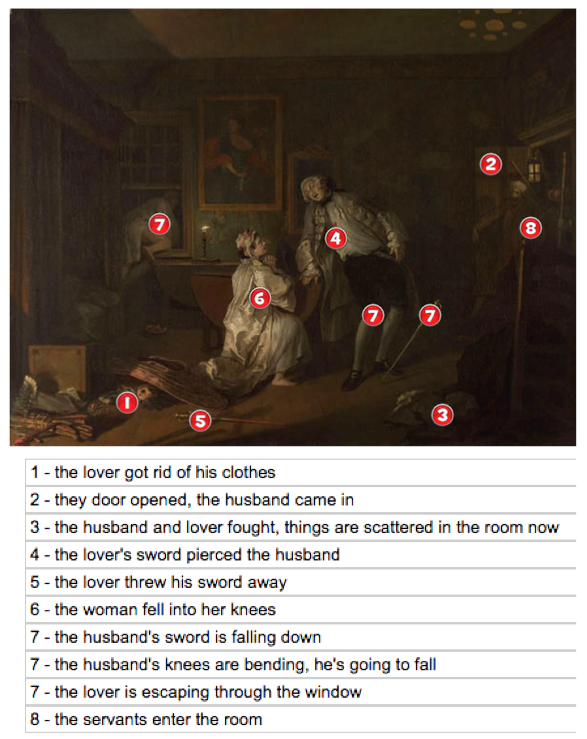
In 1766 G. E. Lessing drew a strict distinction between the arts of time and the arts of space and explained that only the former (poetry, theater, etc.) should be used for conveying stories, simultaneously asserting that paintings which only show one moment in time are not suitable for narrative. To this day, his point of view is regularly echoed by both image theorists and narratologists, most of whom consider that monochronic pictures which only show one moment in time can remind viewers of stories they already know, but cannot tell new stories. My project challenges these ideas. The project has a theoretical and an experimental part. Based on examples such as Théodore Géricault’s Raft of Medusa, I argue that single monochronic pictures can convey all elements that are necessary to tell a story. When seeing people on a self-made raft, we understand that shipwreck preceded. A ship appearing on the horizon lets one conceive the possibility that the people on the raft will be rescued. Certain elements – e.g. the shipwreck, or a ship and potential rescue on the horizon – might even evoke suspense and relief in the viewer, responses which are characteristic of the reception of narrative developments. But if they do so, evoking these effects is possible with still pictures not only verbal narratives, films and comics.
These reflections have been put to the test in experiments with more than 220 non-expert viewers. Participants largely agreed that certain monochronic pictures tell stories. The difference between such images and pictures with lower narrativity was statistically significant. As storytelling is a concept that non-experts master well, this result calls into question the conviction that monochronic pictures, which only show one moment in time, cannot tell stories. Further analyses focused on how strongly content summaries of different participants resembled each other and whether they reconstructed the same timelines (see figure on the left). It appeared that a relatively low number of scripts are used when different participants sum up the content of the same picture, rather than each person telling “their own story”. To take an example: the so-called “Bagnio Scene” from William Hogarth’s Marriage-à-la-Mode shows a woman kneeling in front of a man who has been wounded, while someone flees through a window (figure above). When asked for a summary, viewers either spoke of a duel or a murder. For Banksy’s Media, which shows a young girl in a landscape with destroyed buildings, only the scripts natural catastrophe and destruction by war were used. In general, participants mention actions that are not explicitly represented as well as those that can be directly perceived. It appears that such mentions are based on depicted traces: Thus, fallen chairs in a room and blood on a man’s shirt lead participants to talk about a fight, even when no conflict is explicitly depicted. Different viewers also reconstruct the temporal order of events shown and implicated in different pictures in very similar ways. In a work like Hogarth’s Bagnio Scene more than 50% considered the same event the start or the end of the chain of events that is depicted. It thus seems incontestable that – as opposed to what most relevant theorists believe – pictures convey events that they don’t explicitly depict and that pictures can autonomously convey stories by doing so.
